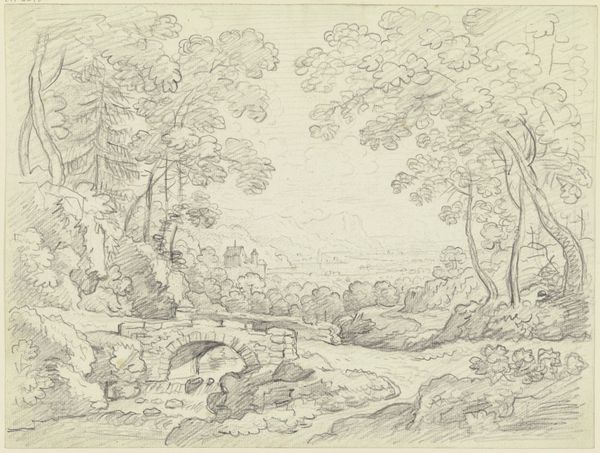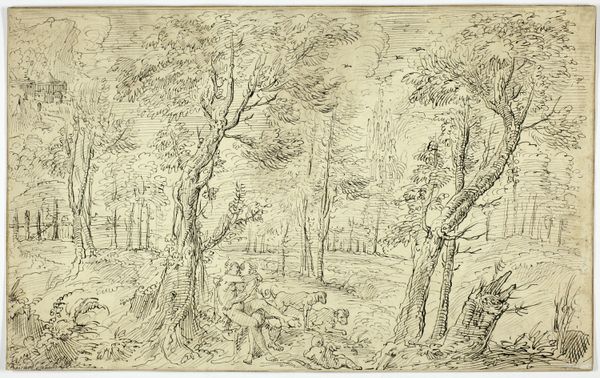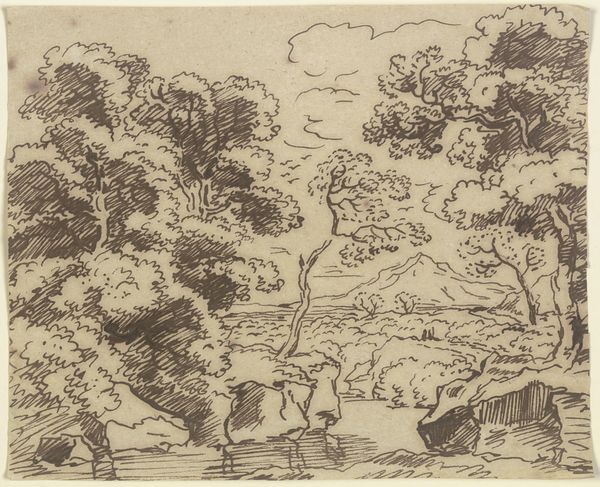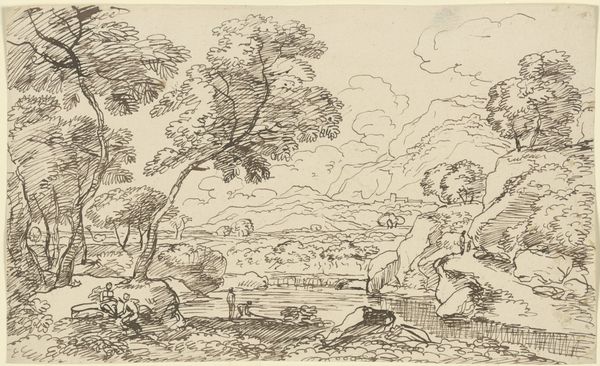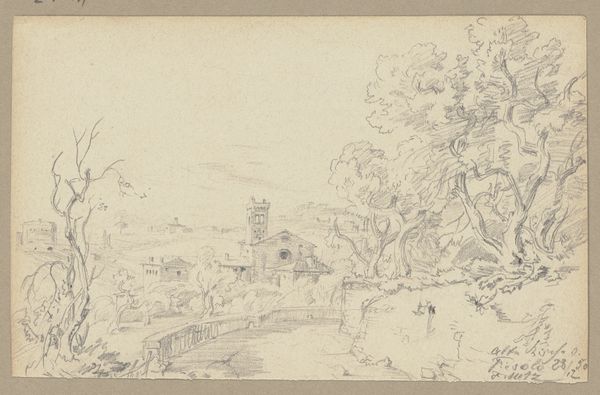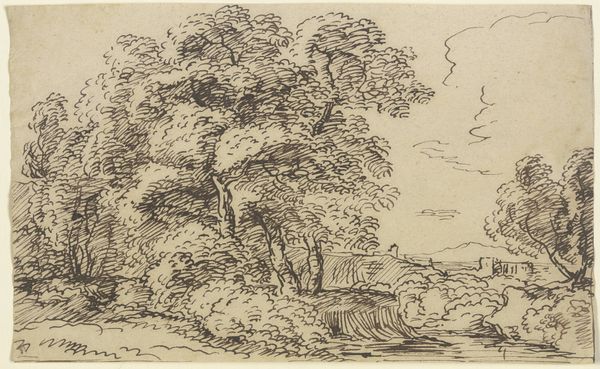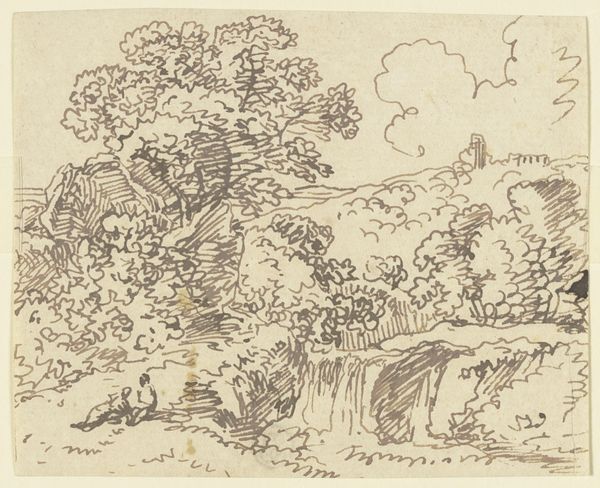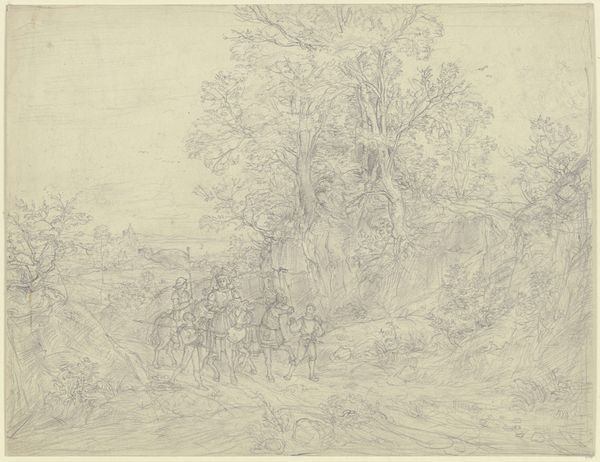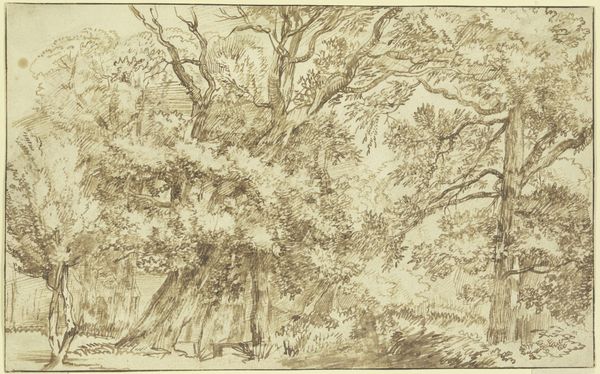
drawing, dry-media, pencil, graphite
#
drawing
#
landscape
#
dry-media
#
pencil
#
graphite
#
realism
Copyright: Public Domain
Editor: This graphite drawing, "Waldpartie mit Durchblick auf ein hochgelegenes Schloß" by Friedrich Wilhelm Hirt, presents a sylvan scene. I'm immediately struck by how the dense, almost claustrophobic, trees in the foreground contrast with that distant castle in the background. How do you interpret that contrast? Curator: That castle nestled high up... doesn't it almost beckon, like a fairytale destination glimpsed through the murkiness of the present? The forest itself becomes a symbol – perhaps of the psychological obstacles, or even the cultural amnesia, that separate us from idealized pasts. Think of folklore, Editor, of childhood memories and lost connections; how might the forest in this drawing echo those sensations? Editor: That's a fascinating connection! I hadn't considered the castle as an idealized past. So, are you saying the drawing isn’t just a landscape, but an exploration of memory and longing? Curator: Exactly! Notice the careful rendering of the trees, each given weight and volume... Consider the symbols imbued within landscapes over centuries—sacred groves, sites of refuge, danger… and beyond Hirt’s depiction: what echoes do you find? Does the positioning of the castle alter this perception, like an artifact to be remembered rather than to be returned? Editor: So the forest path towards the castle isn't just a physical journey, it’s… almost allegorical? This feels like a visual poem rather than just a sketch now. Curator: Precisely. Art invites dialogue— between artist and world, between viewer and artwork—what meaning has resonated with you from this conversation today, that wasn’t apparent beforehand? Editor: I realize how much the setting of an artwork alters its entire perception, shifting it into a different space—making it become less and more. Curator: Agreed, a single artwork can reveal cultural threads connecting the past, the present, and possibilities of the future.
Comments
No comments
Be the first to comment and join the conversation on the ultimate creative platform.

